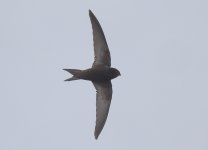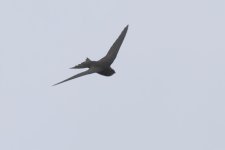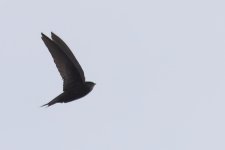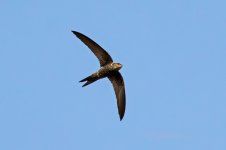Ilya Maclean
charlatan
I found this unseasonal Swift in Cornwall yesterday, and after scrutinising it for about 40 mins aware that Plain Swift is not beyond the realms of all possibility, couldn’t really turn it in to anything other than Common Swift Apus apus, although the dark throat was quite puzzling. However, after posting photos on social media etc, a few folk have suggested I might have been a bit hasty to dismiss it.
I suspect, given photo quality and light conditions, available evidence is inconclusive, and Occam’s razor has to apply. Certainly poo or a good sound recording would be more convincing than these. But at very least, I thought this might provoke a bit a bit of a debate about what the good ID features for Plain Swift really are, and whether a British record is really that bonkers given e.g. extralimital records in northern Spain.
I suspect, given photo quality and light conditions, available evidence is inconclusive, and Occam’s razor has to apply. Certainly poo or a good sound recording would be more convincing than these. But at very least, I thought this might provoke a bit a bit of a debate about what the good ID features for Plain Swift really are, and whether a British record is really that bonkers given e.g. extralimital records in northern Spain.

Attachments
Last edited:







